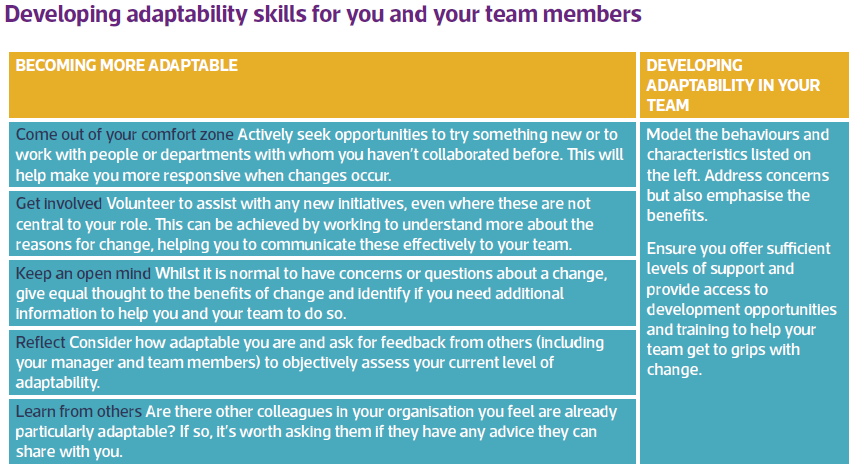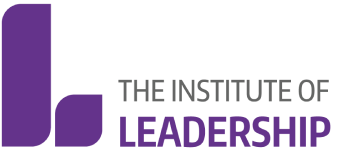- Handle emergencies and solve problems.
- Respond to unpredictable situations and manage their stress.
- Learn new processes, activities and technology.
- Demonstrate adaptable interpersonal skills.
- Being resilient and calm under pressure.
- Acting as a role model by using different methods of communication to suit different circumstances.
- Managing ambiguity and being open to change.
- Working well with diverse groups of people across all levels of the organisation.

Neuro-Linguistic Programming (NLP)
- Neuro – individuals establish their own mental filtering systems for processing the information absorbed through each of the senses. A mental map comprising of internal images, sounds, tactile awareness, internal sensations, tastes and smells forms as a result of this neurological filtering process.
- Linguistic– individuals then give this filtering personal meaning by assigning linguistic representation to it, resulting in conscious awareness.
- Programming – this is the behavioural response that occurs as a result of neurological filtering and the subsequent linguistic map
VUCA
The ability to be adaptable and to communicate effectively with greater awareness using techniques such as NLP helps individuals respond to the constant change organisations face. The type of change should be identified and VUCA, a popular acronym for Volatile, Uncertain, Complex and Ambiguous, offers a means of making sense of the challenges of today’s business environment.
The VUCA Prime was developed by Bob Johansen, author of Leaders Make the Future (2012) suggesting that, VUCA leaders need to ‘flip’ the VUCA model and focus on the following four antidotes:

Agile Leadership
Agility should not be confined to countering Ambiguity, for ‘Agile Leadership’ is increasingly being seen as the key to organisational survival in this digital and VUCA world:
“Agile leaders are connected leaders. They know how to connect with their team, customers, colleagues and wider stakeholders. They also know how to connect with societal trends that are shaping a new reality around us - a digitally accelerating, politically unstable reality that creates novel opportunities and raises the threat of obsolescence across products and whole sectors.” Hayward, S. (2018)

References
Gronn, P. (2000). Distributed properties: a new architecture for leadership, Educational Management and Administration Journal
Harvard Business (2014). What VUCA really means for you www.hbr.org/2014/01/what-vuca-really-means-for-you
Hayward, S. (2018). The Agile Leader Kogan Page
Johansen, B (2012). Leaders Make the Future: Ten New Leadership Skills for an Uncertain World Berrett-Koehler
NLP Academy (2017). What is NLP? www.nlpacademy.co.uk/what_is_nlp
Pulakos, E et al (2000). Adaptability in the Workplace: Development of a Taxonomy of Adaptive Performance Journal of Applied Psychology
Vol.85
Senge, P. M. (1990). The Fifth Discipline: the art and practice of the learning organization. New York, Doubleday/Currency.
The Institute for Systemic Leadership (2017). The Basic Principles of Systems Thinking as Applied to Leadership and Management https://
www.systemicleadershipinstitute.org/basic-principles-of-systems-thinking-as-applied-to-management-and-leadership/
Are you an adaptable leader? Test yourself with our Scorecard.
If you’re a member, you can test yourself on your Adaptability skills and see if you meet the standard.
Spotlights
Further Resources
From the blog









